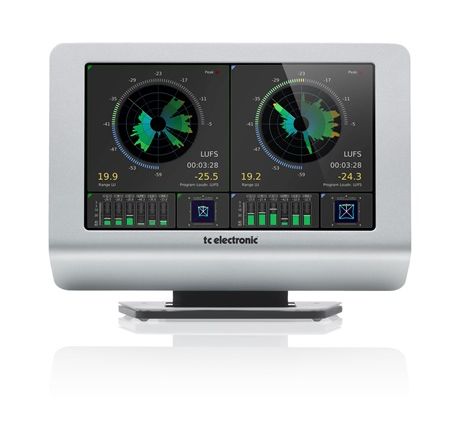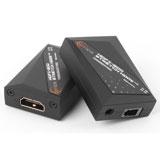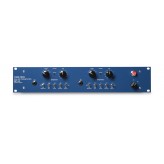“The music is made in front of the microphone” – even today, this golden rule has lost none of its significance. In every recording, the microphone thus continues to be an element that defines the sound. The real challenge today lies in making the right choice of microphone. This determines whether “the music in front of the microphone” will be influenced decisively during recording, or whether more of the decision-making will be transferred to the subsequent post-production.
It is interesting to note that in the present age of digitalization, in many artistic fields in particular, we are experiencing a renaissance of the analog realm. In photography, for instance, it is the Polaroid photo that is making an unexpected comeback. In music production it is the retro sound of the 1960s and 1970s that is being rediscovered, especially by young musicians. Why is this the case?
The distinctive look and individual esthetic of old Polaroid photos are as easily recognizable as the typical sounds of the period. In comparison with modern equivalents, both seem freer, more experimental and often more authentic. Not always technically perfect, they nevertheless convey passion in a particular way. This makes the results unique, less arbitrary, and less readily replaceable than is the case in today’s digital world. Perhaps it is precisely the recollection of these artistic values of the 1960s and 1970s which is the answer to our question. In combination with studio technologies of the present generation, the sound colors from those pioneering days are now introducing experimental possibilities and the freedom required for a new evolution in sound creation.
The U 47 fet is an essential contributor to that time. As a secret weapon for recording producers eager to experiment, it was not only a top microphone for soloists, but also decisively affected the spatial dimension of the sound and the tonal depth of countless productions. The good processing of extremely high sound pressure levels, not previously attainable, also permitted the direct miking of loud guitar amplifiers, bass amplifiers and kick drums. This feature, combined with the capsule sound derived from its famous tube-based predecessor, enabled the U 47 fet to contribute to many legendary recordings of the time. It was precisely this newly discovered versatility that was closely associated with the U 47 fet and its characteristics.
Now the U 47 fet, made by Neumann.Berlin, is back!
Today considerable efforts are being directed toward copying historic working tools and imitating the sound signature of these models. The return of an original such as the U 47 fet is like the return of an icon of that era that is able to give the sounds of the new century an additional unmistakable character. The magical sound of the late 1960s, the 1970s and beyond is thus within reach.
The list of renowned artists who have created musical masterpieces with the sound of the U 47 fet – including AC/DC, Kate Bush, Bruce Springsteen, and later R.E.M, the Pretenders, a-ha, Dire Straits, Metallica, Michael Bublé and many others – can now grow longer ...
The U 47 fet was first manufactured from 1969 to 1986, and since then has been firmly established in the range of microphones used by many well-known studios. In addition to serving as a soloist microphone, it has become legendary especially for the recording of bass-heavy instruments and for the direct miking of loud amps.
The U 47 fet Collectors Edition is a new edition of this classic, issued in the year 2014. For this, Neumann has resumed production of this classic mic, according to the original production documents and schematics. It is supplied with a high-quality wooden case with sophisticated special packaging, and an individual certificate with the serial number of the microphone.
In terms of technical design, the U 47 fet is a condenser microphone with a cardioid directional characteristic and fet 80 circuit technology. Among other things this technology, also used in the U 87, is characterized particularly by a wide dynamic range. The K 47 double large-diaphragm capsule was already employed in the U 47, the legendary tube-based predecessor of the U 47 fet. The K 47 provides a slight boost in the range above 2 kHz.
If required, a switchable low-cut filter raises the lower cutoff frequency electronically from 40 Hz to 140 Hz, thus suppressing undesirable low frequencies (such as impact sound and wind noise), or serving to compensate for the proximity effect. Switchable attenuation can reduce transmission levels by 10 dB, facilitating the processing of very high sound pressure levels of up to 147 dB. In addition, to prevent overloading of the connected preamp, the output signal can be reduced by 6 dB via a switch on the bottom of the microphone.
In order to ensure stable positioning, the microphone is swivel-mounted on an integrated bracket. The bracket stand connector has 5/8"-27 internal thread, with an adapter for 1/2" and 3/8" threads. The microphone cable can be secured at the side of the stand connector, by using the knurled nut to fasten it in the slot (for cable diameters of up to 5 mm). The microphone is available in classic nickel.
| Acoustical operating principle | Pressure gradient transducer |
| Directional pattern | Cardioid |
| Frequency range | 40 Hz ... 16 kHz |
| Sensitivity at 1 kHz into 1 kohm | 8 mV/Pa |
| Rated impedance | 150 ohms |
| Rated load impedance | 1 kohms |
| Equivalent noise level, CCIR1) | 25 dB |
| Equivalent noise level, A-weighted1) | 18 dB-A |
| Signal-to-noise ratio, CCIR1) (rel. 94 dB SPL) | 69 dB |
| Signal-to-noise ratio, A-weighted1) (rel. 94 dB SPL) | 76 dB |
| Maximum SPL for THD 0.5%2) | 137 dB |
| with preattenuation | 147 dB |
| Max. output voltage for THD < 0.5 % | -3.3 dBu |
| Power Supply (IEC 61938) | P48 |
| Current consumption | 0.5 mA |
| Required connector | XLR 3 F |
| Weight | 710 g |
| Diameter | 63 mm |
| Length | 160 mm |
1) according to IEC 60268-1; CCIR-weighting acccording to CCIR 468-3, quasi peak; A-weighting according to IEC 61672-1, RMS
2) measured as equivalent el. input signal



























































